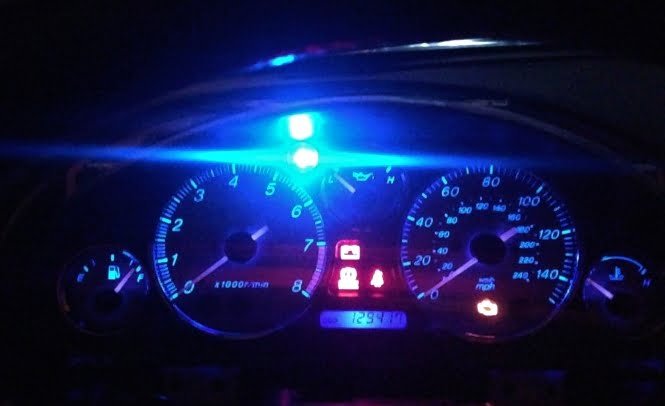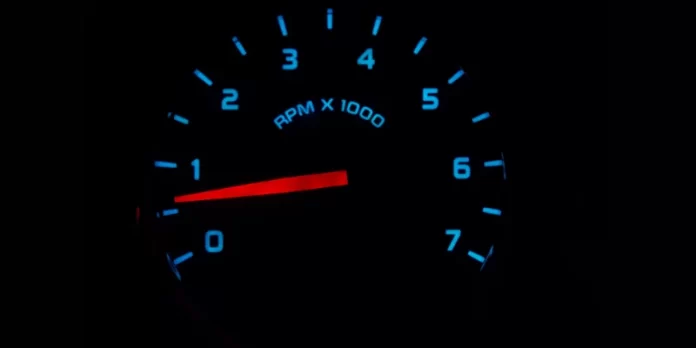As a car owner, it’s necessary to understand some car terms, features, and how they function. You’ll be saving yourself and your mechanic some stress since you’ll already have an idea of what may be wrong with your car in the event of a fault.
This piece will extensively analyze car RPM meaning, its importance, and how to use the RPM gauge to get the best driving experience from your vehicle.
What is RPM?
The full meaning of RPM is Revolutions Per Minute. It is used to measure how fast a machine is operated at a particular time.
In cars, for instance, RPM measures how many times the crankshaft of the engine makes a full rotation per minute as well as how long it takes the pistons to go up and come down in its cylinder. RPM is usually measured in thousands.

Car RPM – Overview
The RPM in the car engine increases when you press the accelerator. Note that it’s not necessarily at the highest RPM that the engine of a car generates its maximum power.
Engine specifications indicate the highest horsepower figure and the RPM when it occurs. For example, 252 hp occurs at 5,600 RPM.
Torque, which is used to measure the instantaneous twisting force of a car engine, has a lower RPM and mostly appears within the range of supercharged or turbocharged engines. An example is 273 pounds-feet at 1600 to 4,500 RPM.
Most cars have a tachometer that indicates their engine RPM. At the upper part of the tachometer range, there is an area called the “redline (highlighted in red).” When the engine speed goes beyond the “redline,” it could lead to serious damage.
However, this damage only occurs in cars with manual transmissions. Interestingly, in cars with automatic transmissions, before the engine speed reaches the “redline’, it automatically shifts.
Note that the pressure you apply on the accelerator pedal will influence how well the transmission will shift.
Normally, an automatic transmission shifts when the engine RPM produces a perfect smoothness and efficiency, making the tachometer stiff.
It’s advisable for those undertaking manual driving to master the skill. Luckily, the tachometer helps make it easier and simpler.
Most new cars with manual transmissions have a rev limiter that prevents potential damage by stopping the engine from entering the redline.
Sometimes, the driver will need to be more alert and change to a higher gear in case of any interruption. When you press the accelerator pedal, the engine power and RPM will automatically increase.
If you have a tachometer in your car, you’ll be able to read the engine RPM (r/min) on the dashboard. The speedometer, which is on the left of the dashboard, indicates the speed gauge of your car during acceleration or deceleration.
All the numbers on the gauge are equivalent to almost 1000 RPM per minute. For instance, when the gauge indicator is at 4, the engine rotates at 4,000 RPM per minute.
Importance of RPM in Cars
Revolutions Per Minute (RPM) are essential features in vehicles. RPM shows the best time for gear shifting into a lower or higher gear in transmissions.
The redline, located at the upper part of the tachometer, displays the RPM. Once you increase the engine speed past the redline, it’ll damage your car.
Additionally, the engine RPM helps the driver know when to shift the gear lower to prevent the car from decelerating or getting stuck.
It’s advisable to shift to a higher gear when the RPM crosses the redline. Automatic transmission vehicles don’t have the problem of gear shifting since it automatically shifts gear when the engine reaches an unsafe speed limit.
If the transmission doesn’t occur, ensure you take your vehicle to an expert mechanic.
How to Use an RPM Gauge or Tachometer to Operate Your Vehicle
The function of an RPM gauge is to show the Revolutions Per Minute as a multiple free 1,000. For instance, the needle points of the tachometer point to 2, which implies that the engine is rotating at 2,000 RPM.
The following are step-by-step methods to use the RPM gauge to operate your vehicle:
Carefully Shift your Manual Transmission
If your car has a manual transmission, you can use the RPM gauge to help shift the transmission smoothly without causing the car to stall.
Stop before accelerating so you can monitor the RPMs. You’ll be stalling your engine if you try to accelerate from a stop without increasing your engine’s RPM.
Try increasing the RPM to 1300, slowly raising your feet off the clutch pedal while ensuring the RPM doesn’t go below 500 to accelerate smoothly from a stop.
After the vehicle gets into motion, you can increase the speed by pressing the accelerator. Be careful while doing this because it may jerk a little at first.
Use the RPM gauge to know when to shift. When accelerating in manual transmission vehicles, you’ll need to shift to a higher gear to be able to accelerate normally.
Take note that in-car acceleration (light), you shift to the highest gear when the Revolutions Per Minute is up to 3000 RPMs. When the RPM gauge reads between 4,000 to 5,000 RPMs, you shift to the next gear (hard acceleration).
You can use your RPM gauge to know when to shift to a lower gear. When you need to reduce your car speed with a manual transmission, you can look at the RPM gauge to know the right time to shift to a lower gear without any hitches.
All you need to do is press the clutch pedal and increase the engine speed to the point where you would downshift to a lower gear.
After shifting to the next lower gear, release the clutch slowly while engaging the gear. For safe deceleration, reduce the pressure on the accelerator.
Check your Powertrain Operation with RPMs
You can use the RPM gauge to confirm whether the engine of your car and its transmission are operating well.
Always monitor your tachometer (RPM gauge) to see when it’s idle. Whenever your car engine RPM rate is high when the car is idle, it’s important to reach out to an expert mechanic to identify and fix the problem.
Also, monitor your car’s RPM when at a constant speed. You could dry at a particular speed to check whether there’s any unusual noise or faulty signs.
Safely Operate Your Engine
All car engines have a range of RPM, recommended by the auto manufacturers when it operates safely. If you exceed that RPM range, your engine may get damaged.
So, it’s important to always read through your car’s user manual to find the recommended RPM range for your car model and make. You can also conduct online research to find the maximum range of Revolutions Per Minute for your engine.
Always monitor the gauge and avoid spikes. During acceleration, shift to the next gear so that the RPM gauge needle will not enter the redline zone.
If your car is not accelerating, report to an expert mechanic immediately, as it is risky. To some extent, you may not have to worry if your RPM spikes into the redline zone. You need to correct it quickly to prevent engine damage.
Never downshift more than one gear at once to avoid accidentally pushing the RPM into the redline. In fact, sudden or hard accelerations to high speeds aren’t advisable as you’ll be putting your engine at risk of damage because of over-speeding.
Lastly, the engine burns more fuel when the Revolutions Per Minute is high. The normal RPM should always be between 1500 to 2000 RPMs whenever you’re driving (at constant speed).
FAQs
How is Engine RPM Measured?
Engine RPM is measured based on the ratio of RPM to rotation. This ratio is based on two things – the period when the engine completes a cylinder rotation per minute; and how long each piston goes up and down. A tachometer is located in the instrument panel of your car that tells how fast the car is speeding.
Why is My Car RPM Fluctuating?
There are several reasons why your car RPM may be fluctuating. Some of them are – low air pressure, clogged air filters, worn-out spark plugs, dirty fuel injectors, and many others. To fix this problem and enjoy a better driving experience, you’ll need to contact your mechanic.
Can Low RPM Damage a Car Engine?
In normal circumstances, it can’t. However, when your engine speed is low, it’s tasking for the car to trail at high speed. The low engine speed will further cause the cylinder and engine temperature.
Low RPMs are only okay if you’re trying to slow down or cruising, but when accelerating, you’ll not be able to shift to the correct gear. This will then result in engine damage.
What is the Average Car RPM?
When idling, the average RPM of a car is between 600 to 1000 RPM. In some cases, the idling process of the car could be rougher at the beginning. When the power rating of your car is high, it’ll get to 1000 RPM, but when it’s low, it’ll go below 600 RPM.
Why is RPM Important?
RPM is not so important in automatic cars as it is in cars with manual transmission. In manual cars, RPM measures how many engine cycles occur and shows whether it is right for a car to interchange between various speeds by moving more than one gear at a time.
The RPM gauge helps car owners to follow up on the Revolutions Per Minute on their cars. To be able to choose between 2 automatic transmissions, you must have your engine RPM.
Conclusion
The car RPM is built to help your car operate more effectively and efficiently.
Also, the measurements help to keep your engine temperature in check and prevent damage.
To get excellent performance from your car, always observe the RPMs and adhere to the recommended gear-shifting methods.



